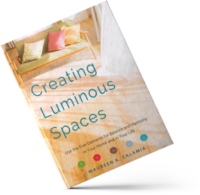 Okay, September is nearly here! It can be the worst month in a home with children. In the process of transitioning into a new school year, parents as well as children can be overwhelmed. With a change in schedules, new schools, new teachers, new expectations, and new friends, this time of year can really test a family’s coping skills.
Okay, September is nearly here! It can be the worst month in a home with children. In the process of transitioning into a new school year, parents as well as children can be overwhelmed. With a change in schedules, new schools, new teachers, new expectations, and new friends, this time of year can really test a family’s coping skills.
According to a study conducted by the APA (American Psychology Association) in 2006, nearly half (47 percent) of Americans are concerned with the level of stress in their daily lives and those with children living at home were more likely to be concerned about stress than those without.
So if you’re stressed out, just imagine how your children feel! Feng Shui does not come with a magic fairy wand (unfortunately, there is no “Easy” button like the commercials), but there are some things you can do to make their spaces a safe haven that will provide support and nurturing during these challenging times.
Some Basics
Be sure to check that your front door entry (both inside and outside) is welcoming. Check that it’s free of clutter, well-lit and attractive. A welcoming entry allows opportunity to come in and reach all the members of the home, so this is the first step to ensure your children have the best chance for success.
Feng Shui their Bedrooms
A Place of Their Own - If your children share a bedroom, be sure that they have a sense of their own space. Often, a visual “divider” such as area rugs or different, by complementary, wall colors can achieve this effect.
Color – Paint the room a calming color. Light colors work well with young children. Teenagers can have deeper, more mature colors, but watch that they aren’t too depressing (dark browns and blacks are not recommended!). According to Sarah Rossbach, in Living Color: Master Lin Yun’s Guide to Feng Shui and the Art of Color, children should be focused on obtaining knowledge, so the blues and greens of the Wood element work well. Black furniture (representing the Water element) can also be incorporated into the scheme.
Size of furniture – If they have a tall armoire or other large piece of furniture, be careful not to place near the head of the bed. This can have an oppressive effect on the child and may lead to nightmares and disturbed sleep.
Slanted ceilings – Slanted ceilings, popular in Cape Cod-style homes, can lead to oppressive energy. If you must place a bed beneath such a feature, paint this section the same color as the ceiling (rather than the wall). There are some additional cures a Feng Shui consultant can provide for this as well.
Bed position – It’s very important to have the bed positioned so that the child can easily see the bedroom door, without straining his/her head. Also, be sure that the bed is not directly in line with the door. Poor bed positioning can lead to a feeling of vulnerability and contribute to poor sleep, illness and stress. Young children can have one of their bed sides along a wall, to give them extra comfort and support. However, teenagers should have only their headboard along the wall. This placement represents taking on more responsibility.
Minimize electronics – EMF’s (electromagnetic frequencies) are emitted even when the appliance it turned off. Be sure to minimize the electronics in your child’s room (computer and accessories, television, game system, VCR, air conditioner, fan, even an alarm clock), and pull the plugs out when not in use. Electromagnetic radiation exposure is a lead contributor to health problems. According to the Institute of Building Biology (www.buildingbiology.net), “these manmade energies have become part of our lives and as such are superimposed to our subtle body energies. The result of this development seems to be an increase in certain illnesses that have been unknown or at least rare before the electricity age”.
Desk position – This is the same as bed positioning: it’s best for your child to have full view of the bedroom door, but not directly in line with it.
Storage under bed – It is most beneficial to have a free flow of air and energy around your child’s bed. In addition, items stored there can preoccupy the child while trying to sleep. Clean out any items stored under the bed, but if you must, limit items to linens.
Quality of Air and Light – Of course, fresh air and natural light is imperative in your child’s room. Limit air conditioning to those unbearable nights. Otherwise, keep windows open for fresh air flow and curtains pulled back.
Positive images – Look around your child’s room. Typically, young children will have positive images that can inspire them: a hero or heroine, gentle characters, and landscapes. With teenagers, that can be another story. See if you can influence your teen to get a positive image of something they have interest in.
Bagua positioning – Just as with your home, the Bagua represents nine areas of life in your child’s bedroom. Using the Bagua, you can determine where the Knowledge corner is. While standing in the doorway facing into the room, it should be the corner to your left. You can enhance your child’s studies through a number of ways, some of which are placing books in this location or enhancing the Earth element (which represents Knowledge) through the use of earth tones, furnishing with a low table, or adding a crystal.
*Even as I say all of this, it has been sometimes challenging to persuade my children to use Feng Shui in their spaces. You can suggest and offer a rationale to convince them, but ultimately, it is his/her room and I believe they should have the ultimate say. If you are moving into a new space, take the opportunity to de-clutter and start afresh.



Leave a Reply
You must be logged in to post a comment.